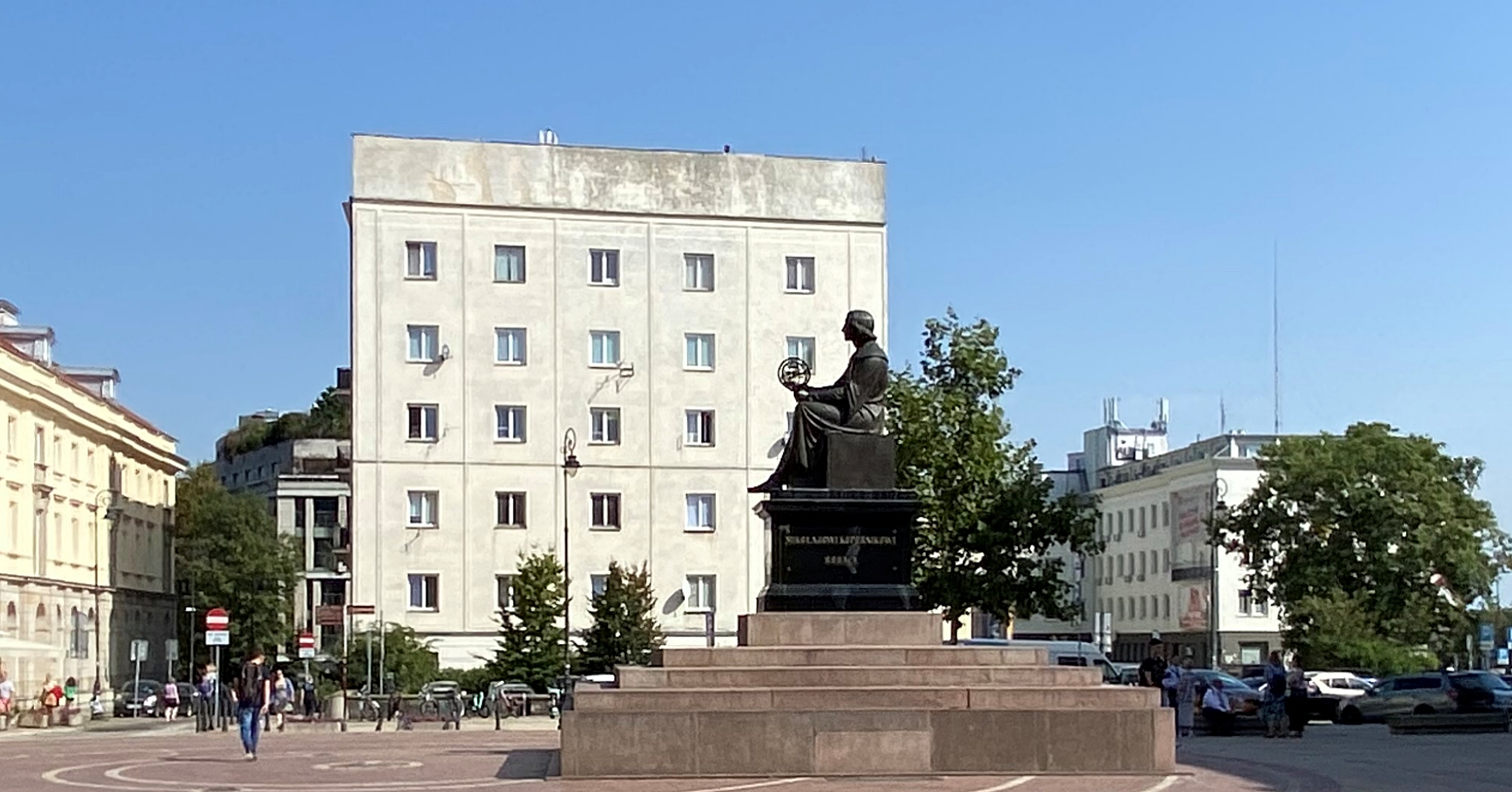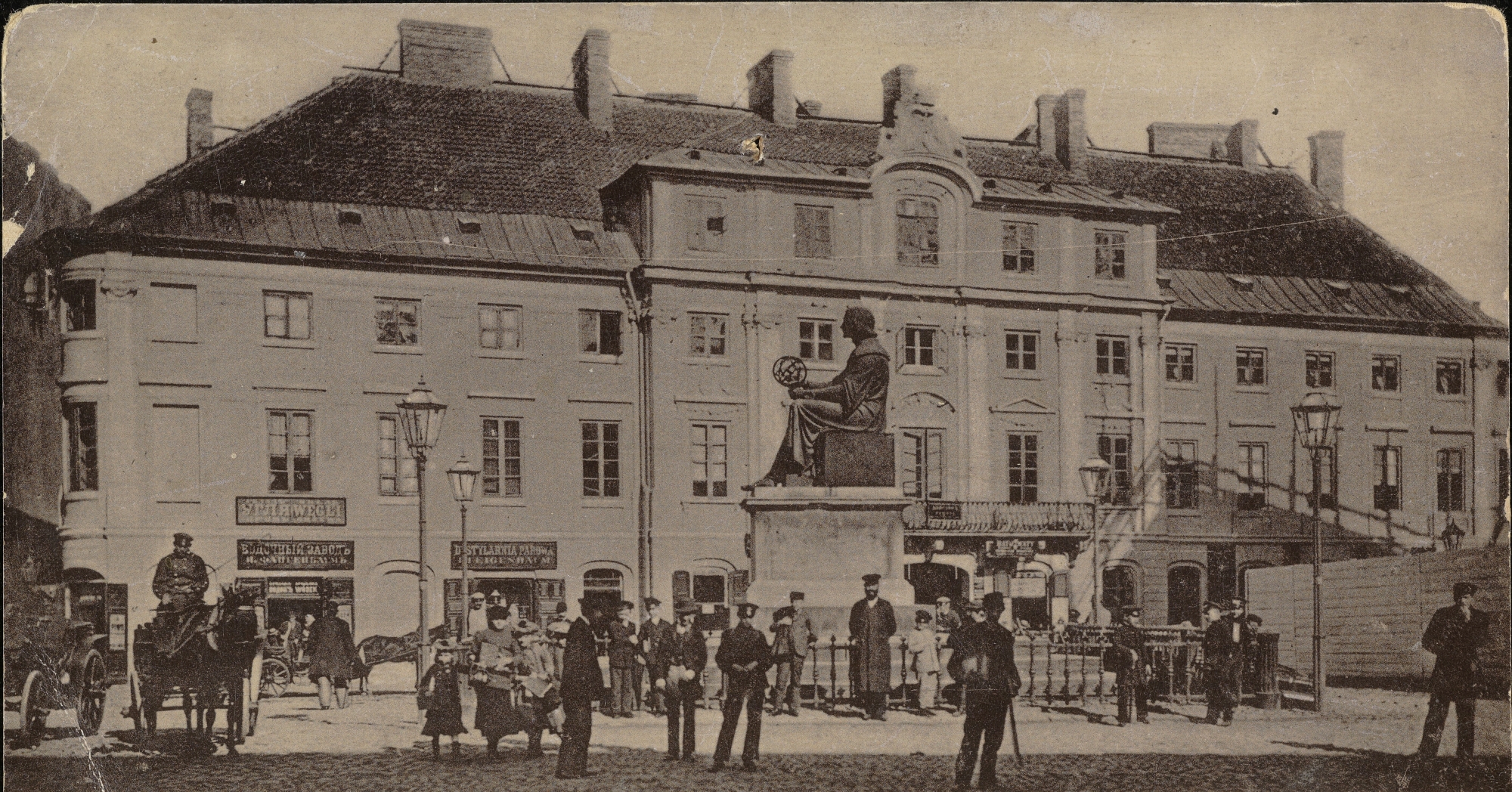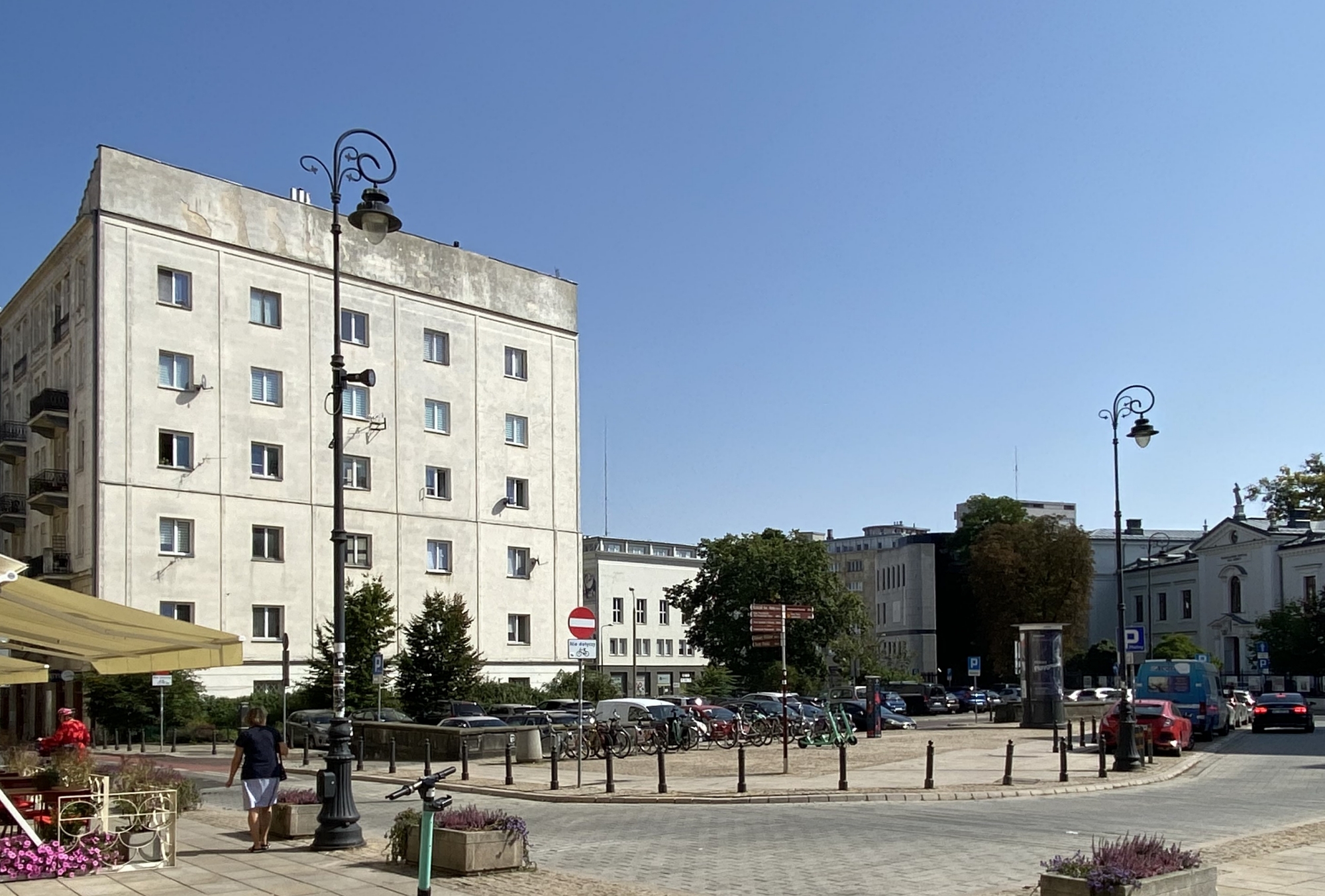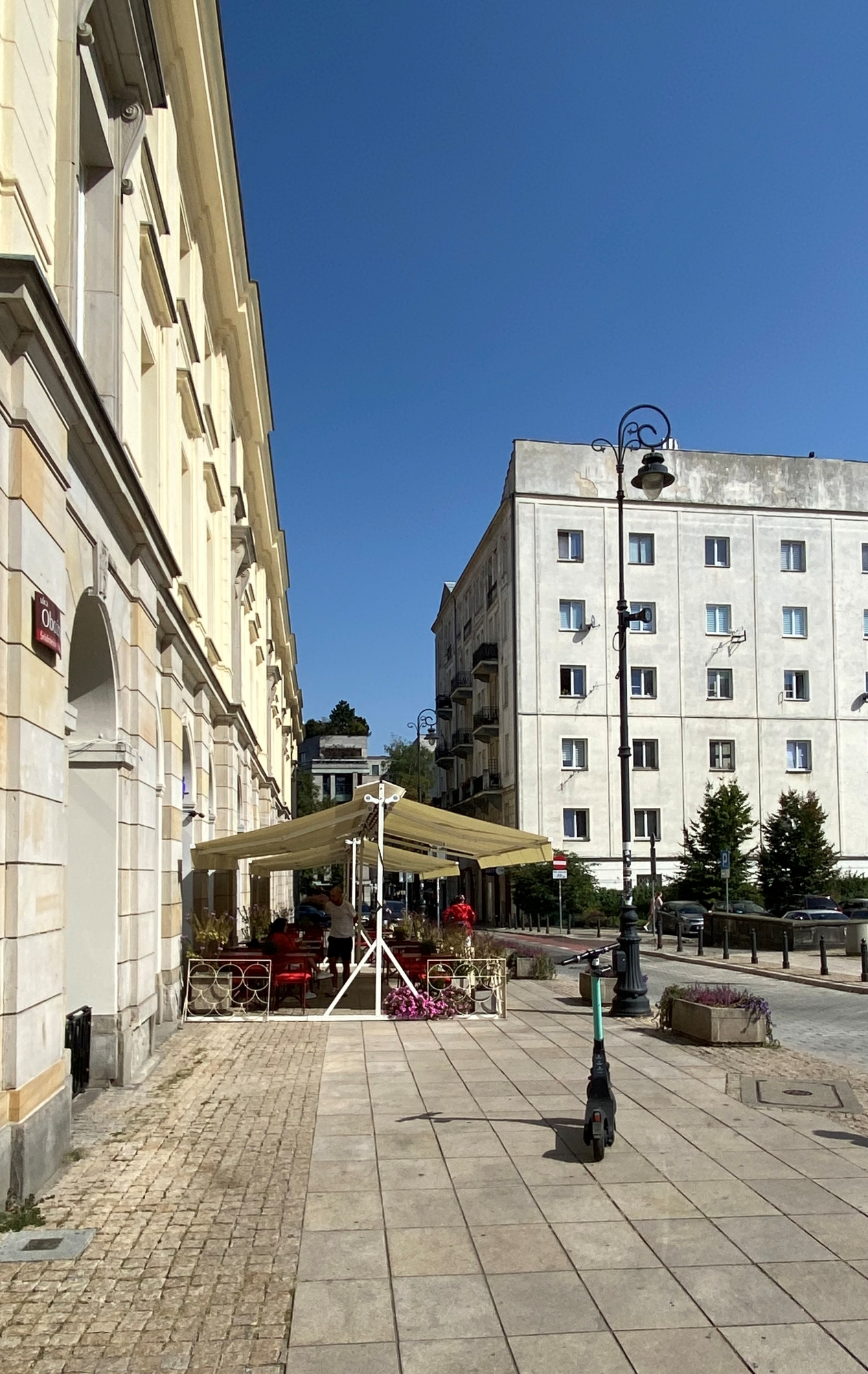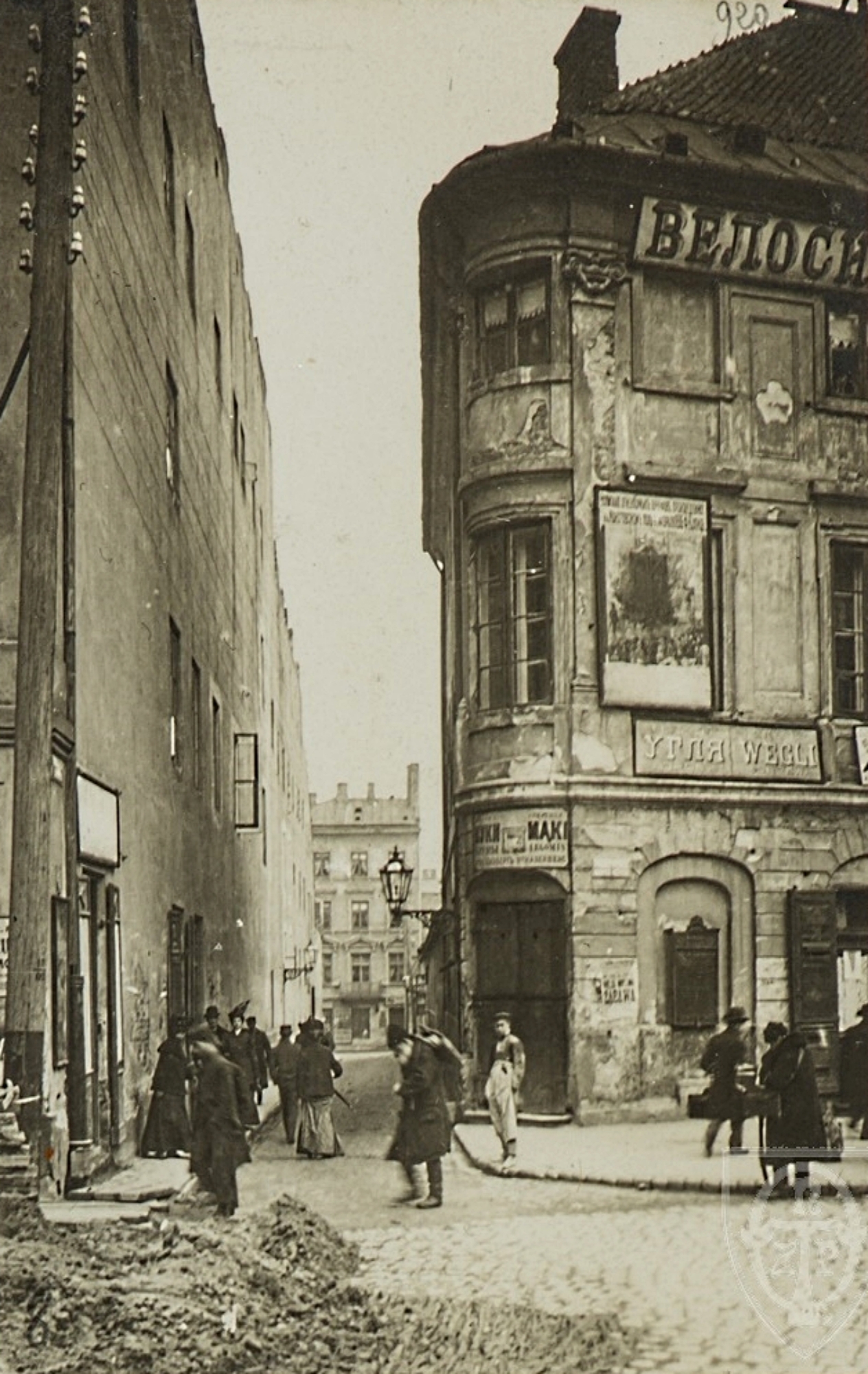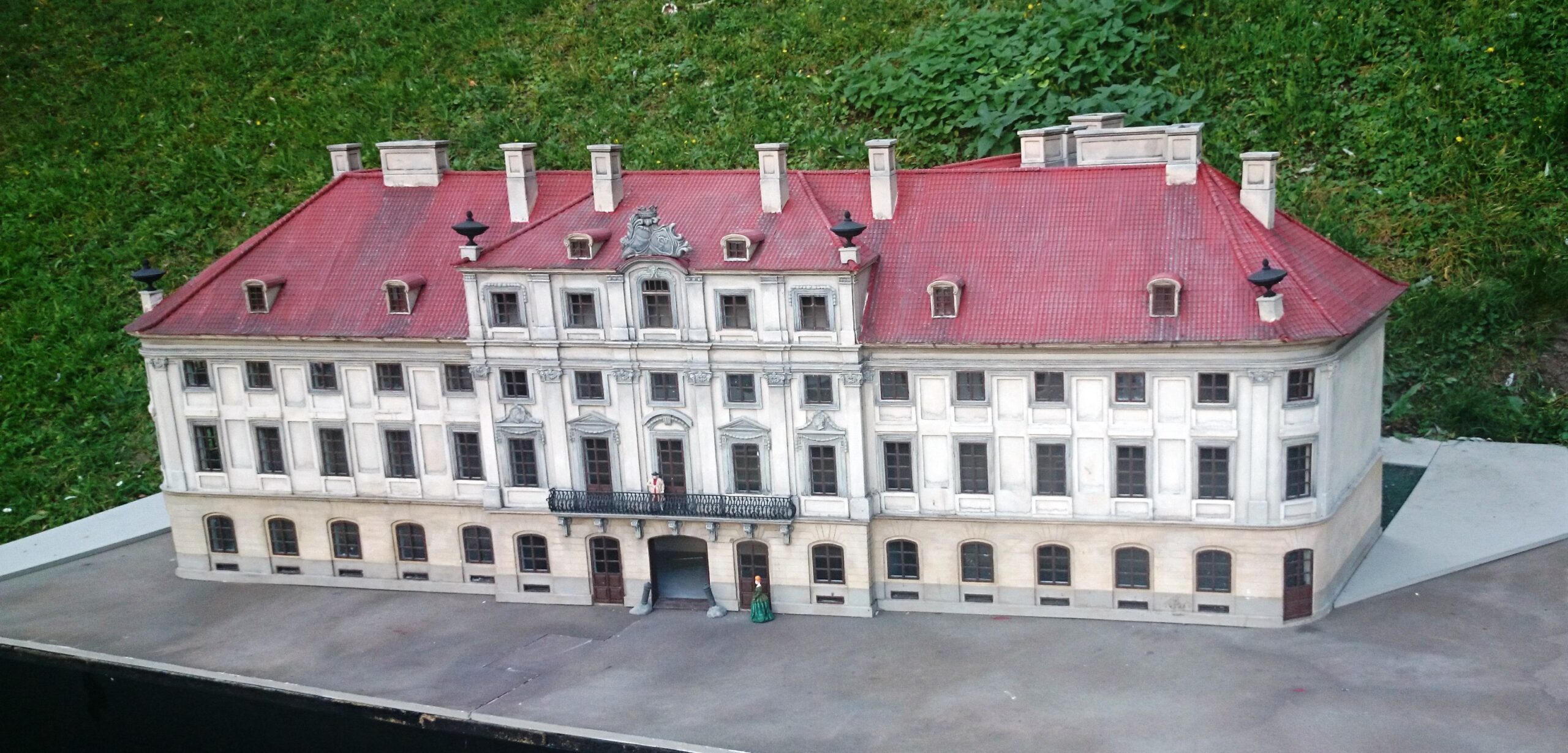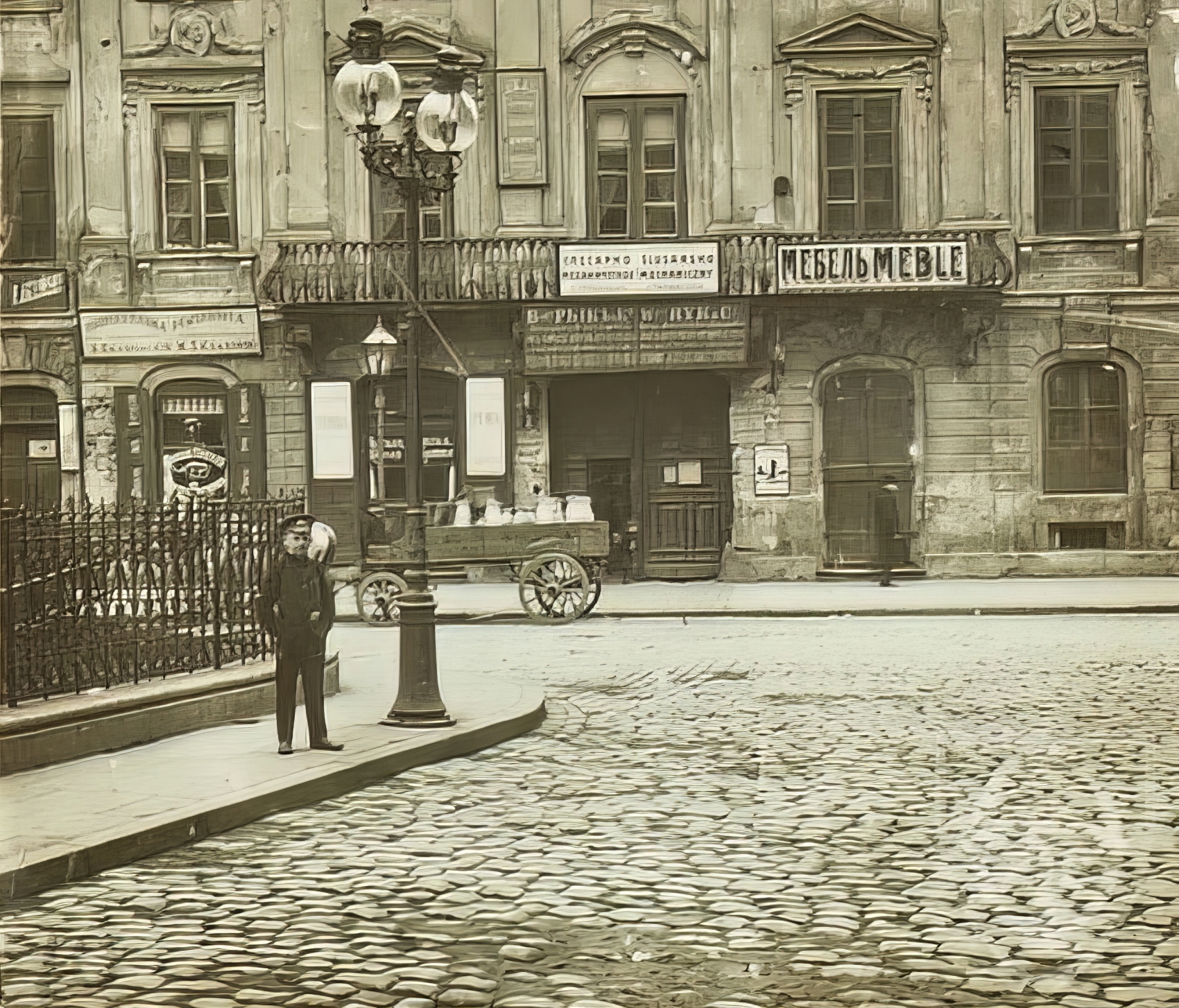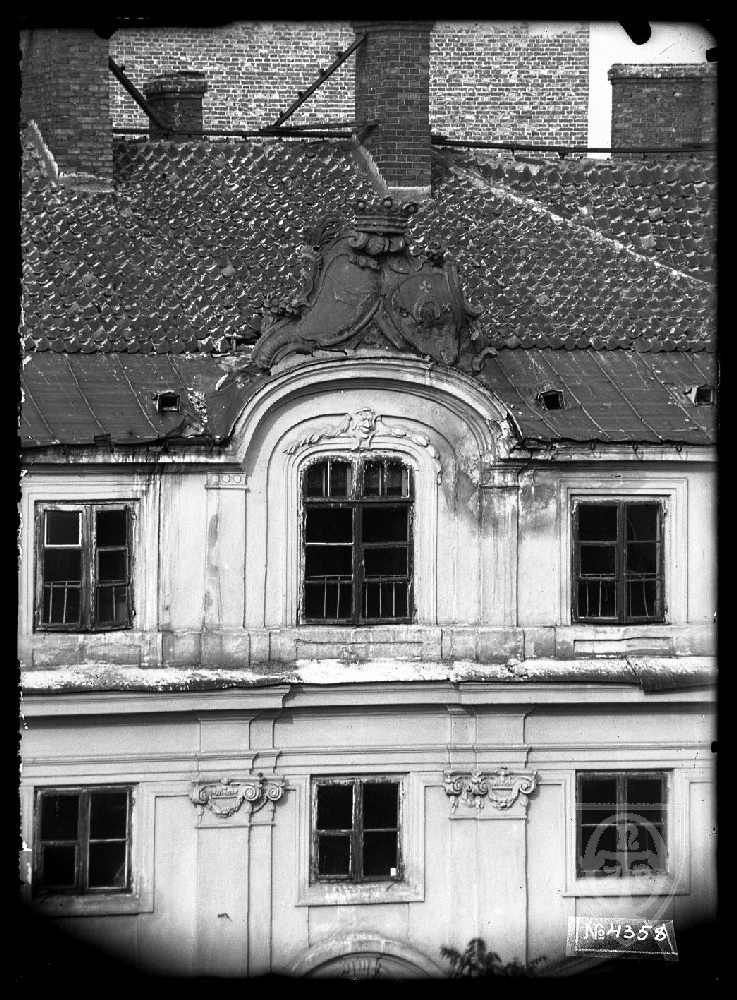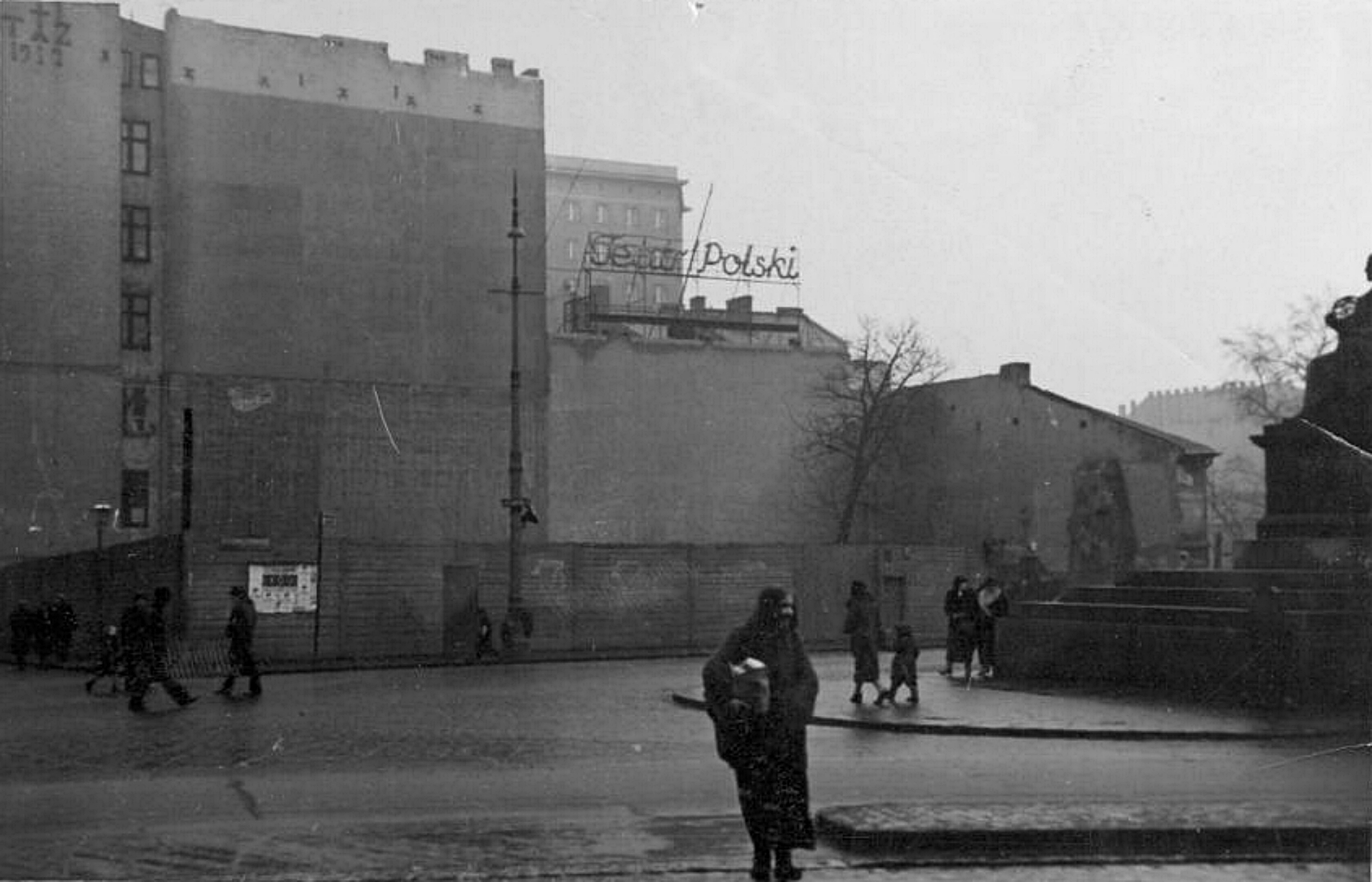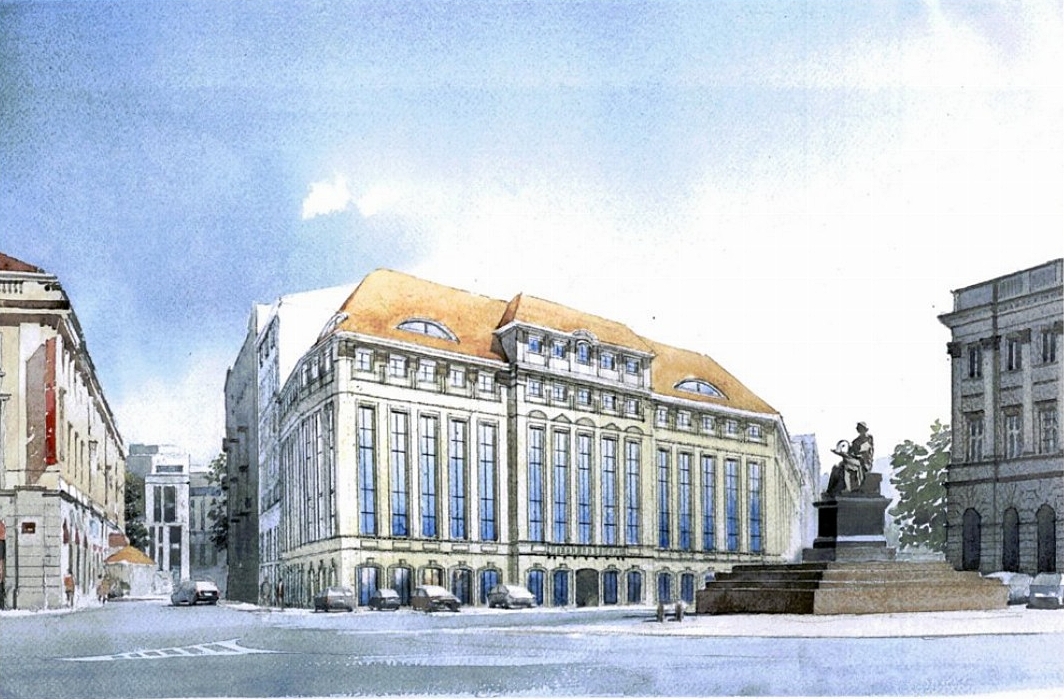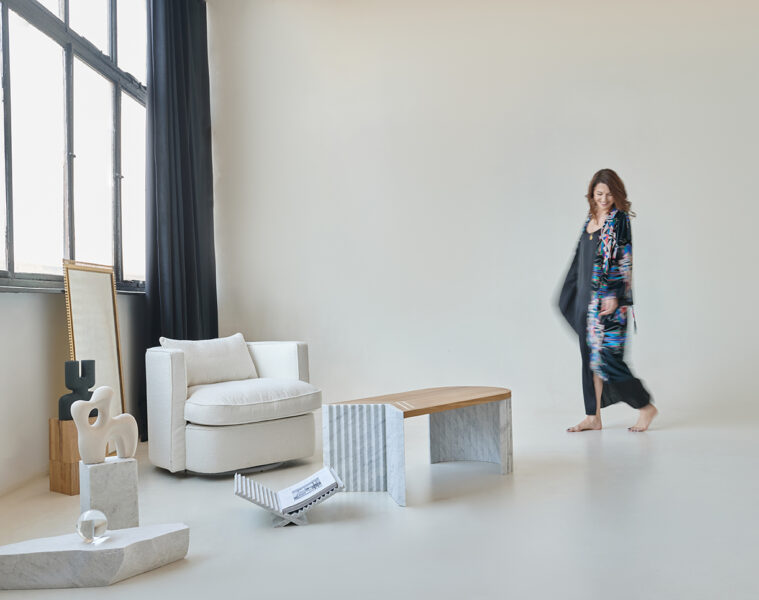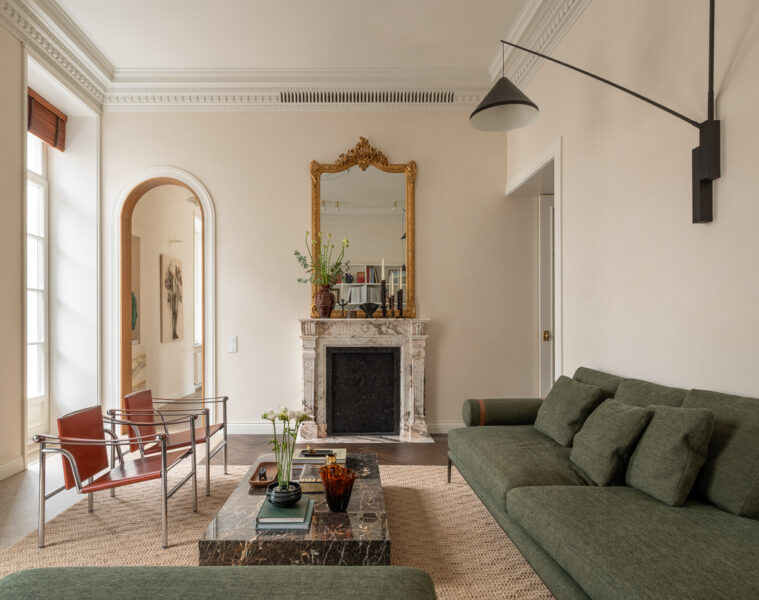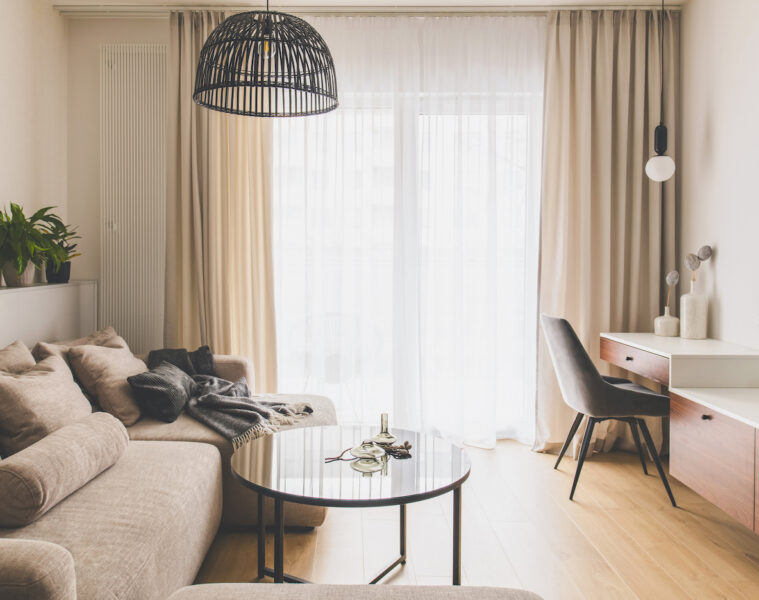Karasia Palace, which stood until the beginning of the 20th century at 2 Krakowskie Przedmieście Street in Warsaw, fell victim to the then equivalent of today’s developer. The palace’s owners demolished it, intending to erect a tall, modern and profitable tenement house on the site. Their plans were thwarted by the First World War, and the square has remained empty for more than a century
In 1769, Marshal Kazimierz Karaś began building a palace on a plot of land given to him by King Stanislaw August. The building was designed by Jakub Fontana – the most eminent architect of the time. Completed in 1772, the residence was a two-storey building with a 15-axis façade and rounded corners. Attention was drawn to the uppermost central window, above which were placed two interconnected rococo cartouches that were shields of the coat of arms: Dąbrowa (the coat of arms of Kazimierz Karas) and Łodzia (the coat of arms of his wife Elżbieta Hubińska). The hipped roof was decorated with four urns, and above the windows of the first floor there were two medallions with busts of King Stanislaus Augustus. The ornamentation of the façade combined features of late Baroque and early Classicism. Karasia Palace was one of Warsaw’s earliest street palaces (i.e. without a front courtyard)
The palace at the beginning of the 20th century. Source: Digital National Library Polona
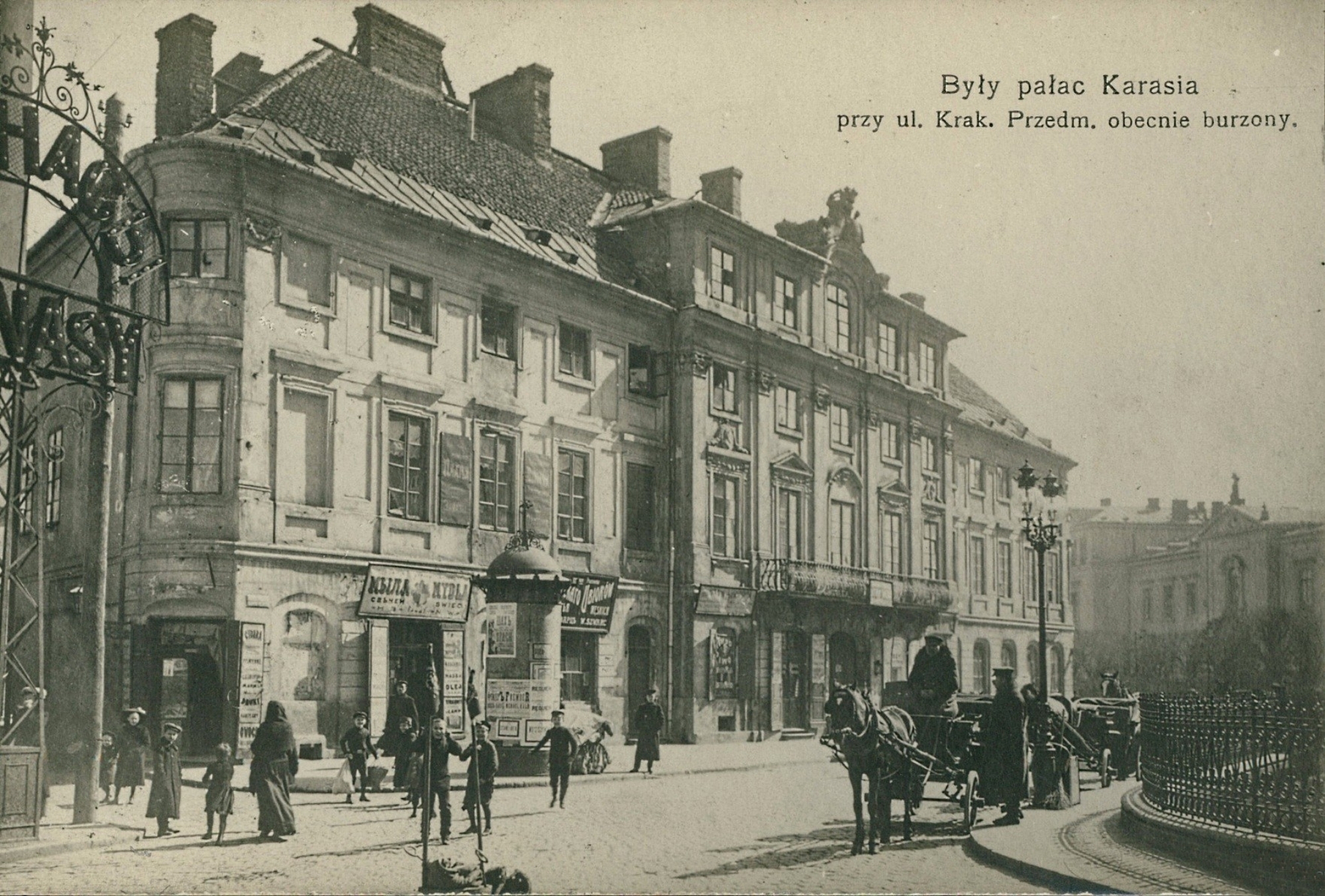
The Karasia family occupied one floor of the building, the rest being used for rent. Initially, the refined flats were rented by dignitaries, aristocracy and rich bourgeoisie. Over time, however, from the mid-19th century onwards, the palace changed its character and became an ordinary tenement house, with shops located on the ground floor. on 11 May 1830, a statue of Nicolaus Copernicus was unveiled in front of the Karasia Palace. In 1905, the first idea to demolish the building appeared, but as a result of protests from the press of the time, the owner abandoned these plans. Shortly afterwards, a section of the palace was demolished in order to widen Oboźna Street. In 1913, the new buyer of the palace, Towarzystwo Akcyjne Wyrobu i Sprzedaży Maszyn i Narzêdzi Rolniczych “Trylski & Kowalski”, obtained permission to demolish the monument, which it promptly carried out, planning to build a tall tenement house on the site. The outbreak of the First World War thwarted these plans. The foundations of the building were visible until the 1940s
Statue of Copernicus against the background of the palace in the early 20th century and today. Source: Digital National Library Polon and whiteMAD/Mateusz Markowski
Karasia Palace in the early 20th century and the same place today. Source: Polona National Digital Library and whiteMAD/Mateusz Markowski
The corner of the palace shortly before its demolition and the widened Oboźna Street today. Source: Towarzystwo Opieki Nad Zabytkami Przeszłości i whiteMAD/Mateusz Markowski
In 1946, the plot was taken away from its owners by the Bierut Decree. After the war, the palace was not rebuilt due to unrealized plans to make Kopernika Street a thoroughfare. For years, the undeveloped property was surrounded by a fence. It was only after 1956 that a car park was created here, which still exists today. All that is left of the old buildings in the quarter is the tenement house at 11 Oboźna Street, which faces the Royal Route with its blind walls, in which the tenants broke the windows. Today, the empty space is called Juliusz Osterwa Square
At the beginning of the 21st century, plans for the development of the plot appeared. The RKW studio presented visualisations of a new ten-storey building, which, however, was not accepted by the city. Another project referred to the Karasia Palace that once stood here. Since then, however, nothing has happened, and such an important and prominent plot of land in the heart of Warsaw remains a car park
Source: blog.magiawarszawy.pl, urbanity.pl
Read also: Architecture | History | Palace | Warsaw | Interesting facts


